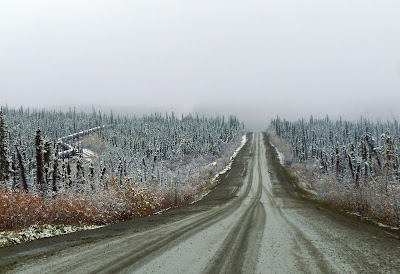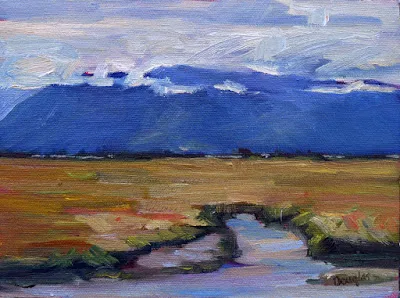Sometimes sentiment overrides practicality. That’s not always a bad thing.
 |
| Arctic Mud in happier (and cleaner) days. |
I believe that I’m the best person I know for picking out a good used car. I’m not talking about the late-model beauty that comes with a warranty, but the clunker your teenager buys with the money from his first job. I come by it honestly. I don’t think I ever paid more than $50 for a car before I married my husband with his big-city ways. In fact, the first time he came to call at my parents’ house, I was changing a tie-rod end.
Arctic Mud was a 2000 Suzuki Grand Vitara. It was my daughter Mary’s first car. I’d helped her sisters and her brother-in-law choose cars, but I wasn’t around to help her. Frankly, the thing was a wreck from day one. Still, she loved it.
Her dad and I helped her drive it to Alaska for college. On arrival, our first order of business was a new track bar. Most calls home started, “Mom, my car’s making this noise,” which would then be followed by another trip to a garage. When she decided to come back east, I strongly advised she sell it there. But she loved that old reprobate of an SUV, and I love her.
 |
| That car spent a disproportionate amount of its life being hauled. Thank goodness for AAA. |
I cooked up a scheme. We’d fly back to Anchorage and fetch it and drive it back across the continent. Not the California to New York trip everyone takes, but Alaska to Newfoundland. It would be cold, and we’d be sleeping in the car, but we had warm blankets. Most of my luggage was for painting supplies. A nice pastor’s wife, Heidi Godfrey, took one look at the jacket I’d brought and gave me one more suitable for a late Alaska autumn.
It was Canada’s sesquicentennial. I’ve always loved the Great White North. What better way to honor it than to head down the Trans-Canada Highway and paint a little bit of the whole country?
We almost didn’t make it out of Anchorage. The car coughed, rattled, and died on the Glenn Highway. Pastor Godfrey and his wife rescued us again.
The catalytic converter was completely clogged. The replacement cost was irrelevant; no such part was to be had in Anchorage for a vehicle that old. That led to a miraculous intervention. A kindly stranger took the beast into his shop on his day off, opened the converter, cleaned it out and welded it back together. Catalytic converters are not supposed to be serviceable.
 |
| I did a lot of painting with my easel lashed to the bumper for stability. |
It was a few days later and late afternoon, but we were finally on our way. North of Wasilla, AK, the muffler fell off. We picked it up off the road and looked for a shop. That led to our second miraculous mechanic. He welded and bolted and sent us on our way with a bill for $40 and several jars of salmon his wife had canned.
Arctic Mud behaved all the way north through the Brooks Range and back down again, where a breakdown would have been catastrophic. In fact, I had no more trouble until I tried to jump a ditch while bouncing out of a fire break. I snapped the tailpipe. But that was my fault, not the car’s.
The alternator went somewhere in the Great Plains, in a spot where we actually had cell phone reception. We were riding back to the closest town with the tow truck driver, when the airport on our right seemed to explode in flames. “Oh, it’s just firefighting practice,” he said. That was a pricey fix but the last of our repairs.
 |
| Much of our journey was on very dicey roads. |
In Newfoundland, we drove north through Hurricane Matthew, which had morphed into a Thanksgiving Day blizzard. It seemed fitting that our trip was bookended by snowstorms, one in Alaska and one in Newfoundland. In all, we traveled 9,998 miles, a lot of it on rutted gravel roads.
Alaska has no state inspections, so our first order of business was to have Arctic Mud re-inspected back in Maine. Of course it failed. After all that driving, our neighborhood mechanic said it wasn’t worth fixing.
Just Right Auto in Warren didn’t agree, and managed to do it without bankrupting us.
It’s up for inspection again and this time it isn’t going to pass without a lot more money. The hood latch rusted away and came loose on the Masspike last month. Mary fixed it well enough to drive with a ratchet tie-down. The 4WD is making ominous sounds and it has a persistent check-engine light. So Arctic Mud, my boon companion, is off to the bone yard. It was, in many ways, the worst of cars, but it had a redoubtable spirit.
Goodbye, Old Paint. We’ll miss you.


























